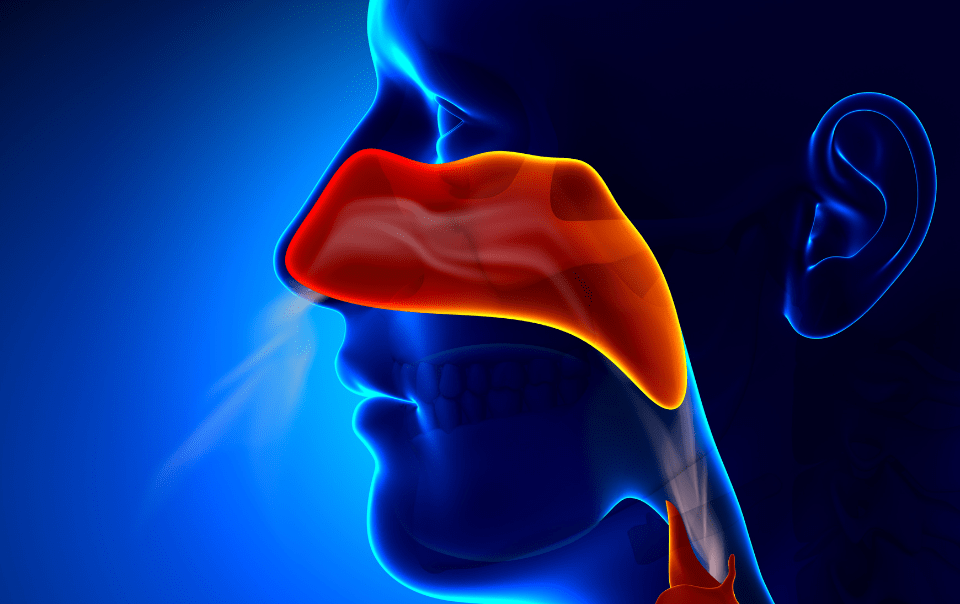Some people have allergies, chronic sinusitis, or other conditions that cause the turbinates to swell and grow, leading to nasal obstruction, congestion, and breathing difficulties. The goal of turbinate surgery is to reduce the size of the enlarged turbinates, thereby improving airflow and breathing through the nose.
Turbinate surgery in Los Angeles, also known as turbinate reduction or turbinoplasty, is a procedure that reduces the size of the turbinates in the nose. Turbinates are bony and soft tissue structures lining the inside of the nasal passages that humidify and warm inhaled air as it travels the upper airways before it reaches the lungs.
Here are some considerations to help you determine if turbinate surgery is ideal for you.
Symptoms That Are Treatable With Turbinate Surgery in Los Angeles
Enlarged turbinates, medically referred to as turbinate hypertrophy, can significantly impede the airflow through the nasal passages, leading to a range of symptoms that can affect one’s quality of life. Recognizing these symptoms is crucial, as they can provide key indications for medical intervention.
Below are the most common signs of swollen/inflamed turbinates:
- Nasal Obstruction and Congestion: Obstructions or blockages in one or both sides of the nose that often become more uncomfortable when lying down or during certain times of the day or night.
- Difficulty Breathing Through the Nose: Patients may find it challenging to breathe through their nose, especially during physical activities, resulting in a reliance on mouth breathing. Over time, this can lead to dry mouth and other complications.
- Reduced Sense of Smell: Enlarged turbinates can impede the olfactory function, leading to a diminished or altered sense of smell.
- Snoring and Sleep Disruption: The nasal obstruction can contribute to snoring or exacerbate conditions like sleep apnea, leading to fragmented and unrefreshed sleep.
- Frequent Nosebleeds: As airflow is restricted, the dryness in the nasal passages can increase, leading to recurrent nosebleeds.
- Postnasal Drip: Enlarged turbinates can lead to increased mucus production, causing a sensation of mucus dripping down the back of the throat.
- Facial Pain or Pressure: Patients may experience pressure or fullness in the cheeks, around the eyes, or the forehead region, which can be mistaken for sinusitis.
- Recurrent Sinus Infections: Reduced airflow and mucus stasis can create an environment conducive to bacterial growth, leading to frequent sinus infections.
It’s crucial to consult with an otolaryngologist (ENT specialist) if you experience any combination of these symptoms persistently for a comprehensive assessment to determine the severity of the turbinate enlargement and recommend appropriate treatment options.
History of Failed Conservative Treatments

Persistent Nasal Obstruction: When non-surgical interventions don’t provide relief, turbinate surgery in Los Angeles effectively addresses chronic nasal blockage by reducing the size of the enlarged turbinates, facilitating better airflow.
Long term Symptomatic Relief: Conservative treatments often offer temporary relief, requiring repeated applications or usage. Turbinate surgery is a more permanent solution that treats the cause to eliminate the symptoms.
Reduced Medication Dependence: Certain medications, such as nasal steroids or antihistamines, should not be used long term because they can have side effects. Turbinate surgery often eliminates the need for these medications.
Improved Sleep Quality: Chronic nasal obstruction can lead to snoring and sleep apnea. When conservative treatments don’t mitigate these issues, surgery addresses the root cause to improve sleep quality.
Prevention of Complications: Chronic nasal congestion can lead to recurrent sinus infections and other complications. Turbinate surgery reduces the risk of these issues by improving nasal drainage and ventilation.
Cost Effectiveness: Over time, the costs associated with ongoing conservative treatments (like medications, doctor’s visits, and related therapies) can accumulate. In some cases, opting for surgery in Los Angeles might be more cost effective in the long run.
Enhanced Quality of Life: Chronic nasal symptoms can significantly affect daily activities, concentration, work performance, and overall well-being. Surgery can alleviate these issues, leading to an overall better quality of life.
Comprehensive Treatment: In cases where turbinate hypertrophy is accompanied by other nasal conditions (such as a deviated septum or nasal polyps), turbinate surgery and alternative surgical interventions can address multiple problems concurrently, providing comprehensive relief.
While turbinate surgery offers numerous benefits, discussing potential risks and benefits with an otolaryngologist (ENT specialist) is essential. They can provide a detailed assessment and guide the patient in making an informed decision.
Types of Turbinate Surgery in Los Angeles
The main goal of treatment is to restore proper nasal function and improve the quality of life for the patient. Enlarged turbinates can be treated via the following procedures:
Electrical cauterization uses an electrical current to shrink swollen turbinates, improving nasal airflow. This minimally invasive procedure reduces nasal obstruction, providing relief from chronic congestion.
Coblation assisted reduction uses low temperature radiofrequency to precisely reduce turbinate size, improving nasal airflow with minimal tissue damage and a swift recovery period.
Microdebrider assisted reduction is a precision-based procedure that shrinks enlarged turbinates and treats nasal congestion, sinus blockages, headaches, facial pain, postnasal drip and prevents sinus infections. This technique offers clear visibility, minimal tissue trauma, and efficient recovery, optimizing nasal airflow and patient comfort. This is Dr. Cohen’s preferred choice with the most long term benefits and no loss of function or side effects.
Laser Treatment: A laser is used to vaporize or reduce the size of the turbinates. It’s less invasive than surgical reduction but may not offer as lasting relief in more severe cases.
What Are the Risks of Turbinate Surgery in Los Angeles?
Turbinate surgery, like any surgical procedure, does come with some risks. While complications are relatively rare, patients need to be aware of them. Here are the primary risks associated with turbinate surgery:
- Bleeding: Some postoperative bleeding is expected, but excessive bleeding can be a complication, potentially requiring intervention.
- Infection: Though uncommon, infection may occur after surgery. In most cases, infections are treatable with antibiotics.
- Scarring: Scar tissue can form within the nasal passages, leading to adhesions between the septum and the turbinates, affecting nasal airflow.
- Dryness: Chronic nasal dryness or empty nose syndrome can occur, causing discomfort/difficulty breathing and crust formation but is seen in less than 0.01% of cases and usually only if burning of the tissues is performed or significant mucosa is resected.
- Over resection: Removing too much turbinate tissue can lead to a condition called “empty nose syndrome.” Patients might feel like they can’t breathe well despite having wide open nasal passages. This is seen in lest than 0.01% of cases and usually if burning of the tissues is performed or significant mucosa is resected.
- Altered Sense of Smell: Though rare, there’s a risk of a diminished or altered sense of smell post-surgery in less 0.05% of cases.
- Pain: Some patients might experience postoperative pain, usually manageable with pain medications.
- Failure to Relieve Symptoms: In some cases, the surgery might not alleviate the symptoms, especially if other underlying causes of nasal obstruction exist.
Some turbinate reduction procedures carry fewer risks than others, such as microdebrider assisted reduction, which prevents empty nose syndrome. Patients should discuss potential risks and benefits with their otolaryngologist (ENT specialist) before undergoing turbinate surgery. The surgeon will outline measures to minimize these risks and provide post operative care instructions to optimize recovery and outcomes.
What Are the Benefits of Turbinate Surgery in Los Angeles?
Turbinate surgery aims to alleviate nasal obstruction and improve airflow by reducing the size or correcting the position of the turbinates. The procedure offers several benefits:
- Improved Breathing: One of the primary benefits is the enhancement in nasal airflow, making breathing through the nose easier and more comfortable.
- Reduced Nasal Discharge and Postnasal Drip: By addressing the underlying issue, turbinate surgery can reduce excessive nasal secretions and the associated postnasal drip.
- Better Sleep: With improved airflow, many patients experience better quality sleep, fewer interruptions, and a reduction in snoring and symptoms of sleep apnea.
- Decreased Dependency on Medications: Patients often find a reduced need for nasal sprays, antihistamines, and other medications they were using to manage symptoms before the surgery.
- Alleviation of Headaches: Chronic nasal obstruction can sometimes lead to headaches. By improving airflow, turbinate surgery can help reduce the frequency or severity of these headaches.
- Enhanced Sense of Smell: In some patients, chronic nasal congestion can impair the sense of smell. Post-surgery, this sense may be improved or restored.
- Improved Quality of Life: Overall, with the relief from chronic symptoms, patients often report an enhanced quality of life, feeling more energetic, focused, and less irritable.
- Long term Relief: While conservative treatments might offer temporary relief, turbinate surgery in Los Angeles can provide a more permanent solution to the problem.
- Reduced Risk of Sinus Infections: Improved nasal airflow and drainage can decrease the likelihood of recurrent sinus infections in some individuals.
- Cost Effectiveness: Surgery is often more cost effective than ongoing conservative treatments, especially when compared to the costs of medications and doctor visits.
To determine the best treatment for your situation and to set realistic post operative expectations to consult with an ENT specialist in Los Angeles like exert nose and sinus surgeon, Dr. Alen Cohen. Some patients may find relief with these alternatives, while others may ultimately require surgery for long term results.

